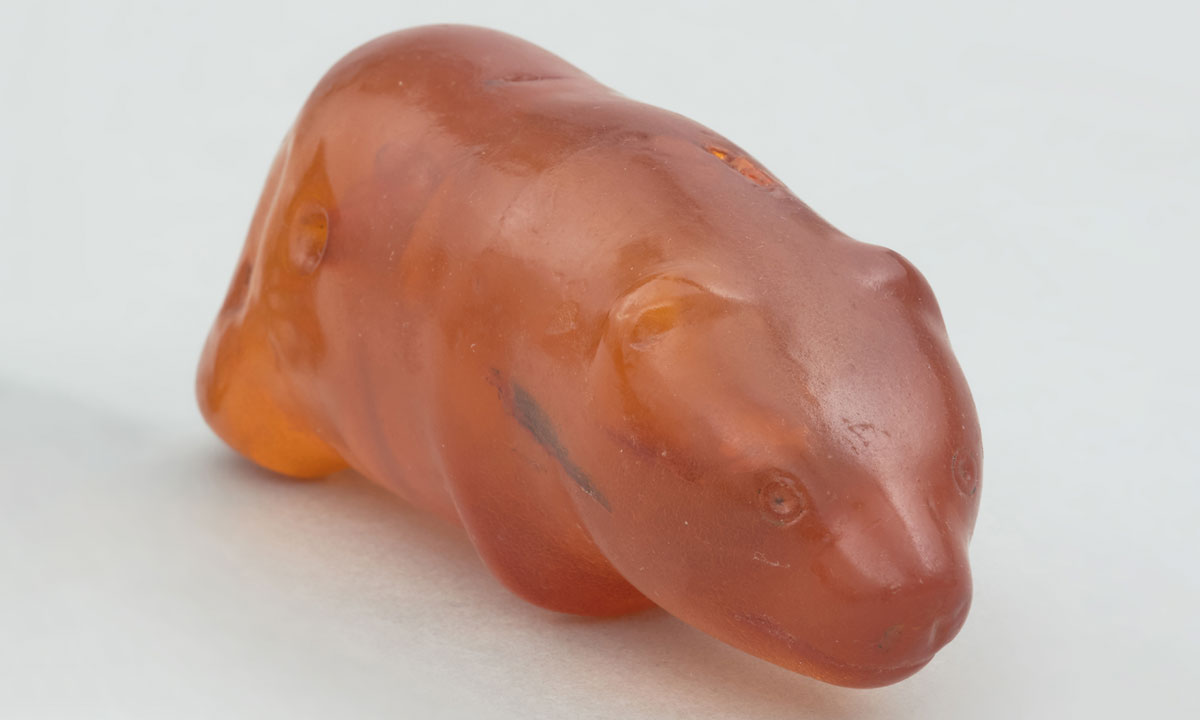
Name: Słupcio
What it is: A bear figurine carved out of amber
Where it is from: Słupsk, northern Poland
When it was made: Between 9600 and 4100 B.C.
Related: Pfyn culture flint tool: World’s oldest known ‘Swiss Army’ knife
What it tells us about the past:
This unique carved amber bear was discovered in northern Poland by workers digging for peat in 1887. An ancient hunter likely wore it as a protective charm, since the bear was the most powerful and dangerous animal that lived in the area during the Stone Age.
“Słupcio” — or “little guy from Słupsk” in Polish — is the name given to the amber bear in 2013, when a Polish kindergartner won a contest to name the artifact. (The lucky winner also snagged a teddy bear.)
The carved bear is on display at the National Museum in Szczecin, around 136 miles (220 kilometers) southwest of his original find spot, and he has become something of a local symbol, where copies of him are widely available as souvenirs.
The figurine is 4 inches (10.2 centimeters) long and 1.65 inches (4.2 cm) tall and may date to Europe’s Mesolithic period (12,000 to 5,000 years ago). At this time, people were mostly hunter-gatherers, so archaeological evidence of their settlements is rare. But in the area of Pomerania on the southern shore of the Baltic Sea, archaeologists have found Stone Age sites with artifacts, such as pottery, tools and weapons, along with objects made from amber that washed ashore. This type of amber comes from marine sediments.
Słupcio’s legs are essentially just bulges, and he cannot stand on his own, but the bear’s head is clearly carved to show his ears, mouth, nostrils and eyes. In the middle of the figurine’s torso, there is a hole that goes all the way through the amber, likely used by the ancient hunter to thread a strap for hanging or carrying the little guy.
At the end of World War II, Słupcio was taken out of Poland by the Germans along with numerous other ancient artifacts, and the amber bear ended up in the Stralsund Museum until he was returned to Szczecin in 2009. While in Germany, Słupcio was studied by experts who called him a “Bernsteinbär” (amber bear) and determined that all of the carving was ancient.
But since Słupcio was a stray find from more than a century ago, experts remain divided on when he was actually made.
MORE ASTONISHING ARTIFACTS
In a 2023 study of several amber bear figurines from the Baltic Sea area, researchers concluded that the objects are more likely to be Upper Paleolithic in date, a period from 50,000 to 12,000 years ago. The amber bears may be further evidence of the Paleolithic tradition of representing animals in cave paintings and portable objects, and they also show that people shifted their hunting from reindeer on the open tundra to elk and bear in the forest.
Carving bears in amber — a natural material that looks like stone, floats in seawater, is translucent when polished, and smells fragrant when burned — may have been perceived as imbuing the material with magic, making Słupcio a powerful Stone Age amulet.



